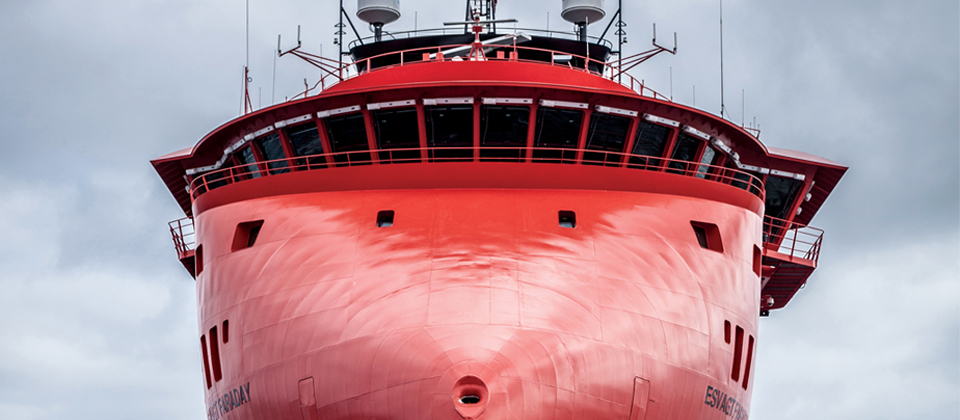
There’s lots of development underway in O&M service vessels. And with good reason: An 8 MW turbine that stops generating power costs its owner or operator some EUR 20,000 per day. ‘Service operation vessels’ (SOVs) are being permanently stationed at major wind farms – and their form and function are undergoing revolutionary change.
Veja Mate wind farm, located far from the shore in German waters, will be the home not only for 67 Siemens Wind Power 6 MW turbines, but also a more-or-less permanent hang-out for another piece of high-tech machinery: a fully equipped SOV.
Along with two new sister vessels launched at separate ceremonies in Rostock and Hamburg, Germany, in late June, the SOV planned for Veja Mate forms part of today’s best answer to reducing the costs and difficulty of keeping the blades turning far from the shore, and together they represent a new era in the offshore wind industry.
NEW SERVICE CONCEPTS
Wind farm operations and maintenance are demanding tasks under the best of conditions. Move the site 60 km from land, however, and it becomes a different kettle of fish.
“SOV designs have undergone extensive changes during the past couple of years,” says A2SEA Technical Development Manager Jesper Tang Kristensen. “They can now have more crew and passengers, they’re faster, more maneuverable and more stable, and many can even carry smaller vessels on board.”
At one level, the aim of such developments is to enable maintenance work to be carried out without being hindered by vessel availability, weather conditions or wave height, for example. At another, they are a direct and significant contribution to reducing the Levelised Cost of Energy (LCoE).
EFFICIENT ACCESS
With accommodation for up to 40 people, the Siemens SOVs can stay close to the wind farm for weeks at a time. And they’re bristling with advanced technology and tools for carrying out O&M tasks as efficiently as possible, too. For example, they feature a hydraulically stabilised bridge, replacing normal entry systems and making it possible to gain access to a turbine under a wider variety of conditions – even at wave heights of 2.5 metres, which adds a full metre to what conventional landing methods can handle.
“Changeable weather will continue to make working at sea challenging,” says Jesper Tang Kristensen. “And, naturally, spare parts, tools and bunkering still necessitate trips to shore, but this latest generation of service vessels for wind farms is safer, quicker and more reliable than anything we’ve seen before.”
“The combination of hotel vessels and the new SOVs have made going further from shore a completely different case,” he continues. “The turbine service crews can be picked up at the hotel in the morning, saving perhaps three hours of transit time, and more people can stay at sea to be instantly ready when weather windows are open. It’s a whole new world out there!”
Like this post? Subscribe now and get notified about new content!